Recent analysis highlight that the 3D printing market faces dynamic cost fluctuations due to innovations in printing materials, advanced equipment, and rising demand for specialized applications across sectors such as healthcare, aerospace, and automotive. Market reports offer in-depth cost breakdowns, including projections for material and equipment costs, allowing stakeholders to anticipate pricing changes and identify cost-saving measures. By leveraging these insights, companies can streamline procurement strategies, manage expenditures more effectively, and make data-driven decisions in sourcing materials and technologies. With real-time data and industry-specific forecasts, stakeholders are better equipped to optimize their investments in 3D printing, maximizing returns while staying responsive to evolving market demands. Procurement Intelligence for 3D printing market: Category Management and Strategic Sourcing "To stay ahead in the 3D printing market, companies are optimizing procurement strategies, leveraging spend analysis solutions for vendor spend analysis, and enhancing supply chain efficiency through supply market intelligence. Procurement category management and strategic sourcing are becoming vital in achieving cost- effective procurement and ensuring timely availability of essential raw materials for 3D printing production." 3D Printing Market Pricing Outlook: Spend Analysis The 3D printing market is experiencing dynamic pricing trends, largely influenced by rapid advancements in materials, equipment, and technology. Rising costs stem from growing demand across industries such as healthcare, aerospace, and automotive, where specialized and high-quality 3D printing materials are essential. The graph shows a general upward trend in pricing for 3D printing market, likely due to rising costs, increased complexity, and growing demand. However, there may be fluctuations influenced by economic conditions, technological advancements, and competitive dynamics. Comprehensive Price Forecast: Our advanced analysis indicates a steady upward price trend driven by multiple factors, including escalating costs of raw materials (particularly metals and high-grade polymers), increased investments in next-generation 3D printing technologies, and the expansion of industry-specific applications. With a projected annual growth rate in pricing, the market is poised for substantial increases through 2032, reflecting strong adoption in high-value sectors and the continuous development of innovative materials and capabilities. As customization demands surge and production requirements become more complex, competition among suppliers is also intensifying. Our insights underscore critical procurement strategies that can help stakeholders mitigate rising costs, such as bulk material sourcing, strategic partnerships with suppliers, and optimized inventory management. By embracing a proactive procurement approach, organizations in the 3D printing market can effectively manage price escalations and secure a competitive advantage in this fast-evolving field. Optimizing procurement strategies in the 3D printing market presents significant opportunities for cost savings and operational efficiency across industries. Collaborative purchasing, particularly for high-demand materials like polymers and metals, allows companies to leverage bulk buying power and secure discounts from suppliers. Digital design optimization tools, such as CAD and simulation software, reduce material waste by improving precision in prototyping and production stages. Investing in material recycling systems enables businesses to repurpose unused or scrap materials, cutting raw material expenses. Adopting modular and energy-efficient 3D printing technologies lowers operational costs, with efficient energy use reducing utility expenses. Cloud-based project management and remote monitoring tools streamline operations, minimizing the need for on-site personnel and associated travel expenses. Strategic supplier relationships can also yield favorable terms, such as deferred payments or discounts on bulk orders, helping manage cash flow more effectively. These strategies not only foster sustainable practices but also empower organizations to maximize production capacity and profitability while managing resources effectively. The 3D printing market is experiencing robust growth driven by rising demand for customized manufacturing, increased funding, and advancements in additive manufacturing technologies. Demand is particularly high due to the ongoing need for rapid prototyping and efficient production processes, supported by collaborations among manufacturing firms, technology innovators, and research institutions. The market’s growth is further fueled by applications across diverse sectors, including healthcare, automotive, aerospace, and consumer goods, which require precise and scalable production solutions. Demand Factors: 1. Industrial Adoption: Growing interest from industries such as automotive, healthcare, and aerospace is driving demand for high-quality, reliable 3D printing technologies to meet complex manufacturing needs. 2. Customization & Prototyping: The unique capability of 3D printing to create customized products and rapid prototypes accelerates demand across sectors aiming for innovation and faster time-to-market. 3. Technological Advancements: Developments in 3D printing materials (such as metals, ceramics, and biodegradable polymers) and techniques are expanding application possibilities, increasing demand in both established and emerging sectors. 4. Sustainability Trends: With a focus on reducing waste and promoting sustainable practices, many organizations are adopting 3D printing for eco-friendly, on-demand production, further stimulating demand. 1. Diverse Material Availability: An expanding range of 3D printing materials, including biocompatible options and advanced composites, supports various applications and promotes scalability in supply. 2. Global Production Hubs: Growth in production hubs across North America, Europe, and the Asia-Pacific region enhances supply chain resilience, improving availability and logistics. 3. Technological Improvements in Equipment: Innovations in 3D printer design and software improve efficiency, accuracy, and production speed, making high-quality equipment more accessible and affordable. 4. Supplier Competition: Increased competition among suppliers drives advancements in material quality, price reductions, and better service agreements, fostering a competitive and diverse supply landscape. Regional Demand-Supply Outlook: 3D Printing Market in North America North America, especially the United States and Canada, maintains a leading position in the global 3D printing market, distinguished by: 1. Industrial Pioneers: Major companies in aerospace, healthcare, and automotive industries are leveraging 3D printing for rapid prototyping and customized manufacturing, significantly boosting market demand. 2. Strong Investment in R&D: Substantial funding from both government programs (e.g., DARPA, DOE) and private sector investments support advancements in 3D printing technologies, fostering innovation across industries. 3. Material and Equipment Development: North American institutions and firms heavily invest in research and production of specialized 3D printing materials, such as high-grade metals and biocompatible polymers, ensuring reliable supply and a competitive edge. 4. Technological Leadership: The region leads in developing cutting-edge 3D printing technologies, such as multi-material and high-speed additive manufacturing, catering to increasing demand for advanced capabilities in precision engineering. 5. Global Standard Setting: Through strategic international collaborations, North America influences global 3D printing standards and practices, solidifying its role as a strategic market for stakeholders seeking growth and innovation. North America remains a key hub for 3D printing innovation and growth Supplier Landscape: Supplier Negotiations and Strategies The supplier penetration in the 3D Printing Market is substantial, with a growing number of global and regional players contributing to the development and manufacturing of 3D printing technologies and materials. These suppliers play a crucial role in the overall market dynamics, impacting pricing, innovation, and accessibility. The market is highly competitive, with suppliers ranging from large technology companies to specialized firms focused on innovative printing solutions and materials. Currently, the supplier landscape is characterized by significant consolidation among top-tier technology providers, which dominate the market share. However, emerging startups and specialized companies are also expanding their footprint by focusing on niche applications and advanced materials that cater to industries like healthcare, automotive, and aerospace. Some of the key suppliers in the 3D Printing Market include: Year Development Impact 2022 Metal 3D Printing Expansion: Increased adoption of metal additive manufacturing in aerospace. Enabled more complex and durable parts, reducing costs and enhancing performance. 2022 Bioprinting Advancements: 3D bioprinting of tissues and organs gained traction in medical research. Revolutionized personalized medicine and spurred innovation in the healthcare sector. 2023 Sustainable 3D Printing: Development of eco-friendly materials for additive manufacturing. Supported green manufacturing initiatives, reducing environmental impact and waste. 2023 AI Integration: AI-driven software for error detection and optimization in 3D printing. Improved accuracy, efficiency, and scalability in industrial production processes. 2024 Mass Production: Major companies moved from prototyping to mass production using 3D printing. Accelerated production processes, reducing lead times and costs in automotive and consumer goods. 2024 Multi-Material Printing: Breakthroughs in printing with multiple materials simultaneously. Enhanced the complexity and functionality of printed parts for aerospace and electronics. Procurement Attribute/Metric Details Market Sizing The 3D printing market is projected to grow from USD 15.2 billion in 2024 to USD 70 billion by 2032, with a CAGR of 20% (2024-2032). Procurement Technology Adoption Rate 40% of organizations are adopting advanced 3D printing technologies, including metal 3D printing, additive manufacturing, and 3D scanning to improve production processes and product design. Top Procurement Strategies for 2024 Focus on increasing supply chain resilience, leveraging sustainable materials, optimizing production costs, and enhancing innovation through advanced 3D printing techniques. Procurement Process Automation 30% of manufacturing companies have automated key stages of their 3D printing supply chains, including design validation and part production. Procurement Challenges Key challenges include the high cost of 3D printing equipment, the limited availability of skilled labor, and supply chain bottlenecks in sourcing materials such as advanced polymers and metals. Key Suppliers Leading suppliers include Stratasys, 3D Systems, HP Inc., EOS GmbH, and Materialise. These companies offer solutions for additive manufacturing, 3D printing materials, and software tools for production. Key Regions Covered North America, Europe, Asia-Pacific, and Rest of the World, with specific focus on the U.S., Germany, China, and Japan due to their large manufacturing sectors and adoption of 3D printing technologies. Market Drivers and Trends Growth is driven by advancements in material science, the increasing need for custom and on-demand production, and the integration of AI and machine learning in the design and production stages. Notable trends include the rise of 3D printed prosthetics, automotive components, and aerospace parts.Procurement Intelligence for 3D printing Market
technology, an increase in industrial applications, and rising demand for customized and complex product
solutions across multiple sectors. With significant investments from industries such as healthcare, aerospace, and automotive, the 3D printing market is leveraging new materials and digital design innovations.
Strategic sourcing and procurement management play a crucial role in streamlining the procurement process for 3D printing development. As competition intensifies, companies are leveraging market intelligence solutions and procure analytics to optimize their supply chain management systems.
The outlook for the 3D printing market remains highly positive, with several key projections and trends driving growth through 2032: Growth rate: 20 %

Key Trends and Sustainability Outlook
Growth Drivers
Overview of Market Intelligence Services for the 3D printing market
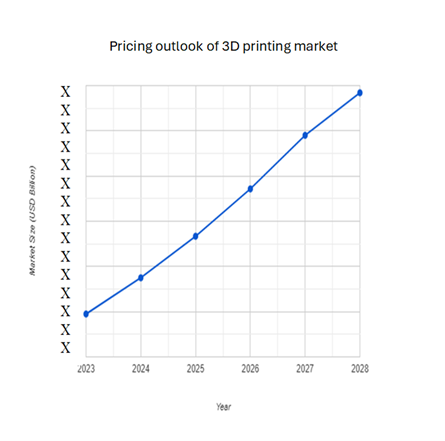
Cost Breakdown for the 3D printing Market: Total cost of ownership TCO and cost saving opportunities
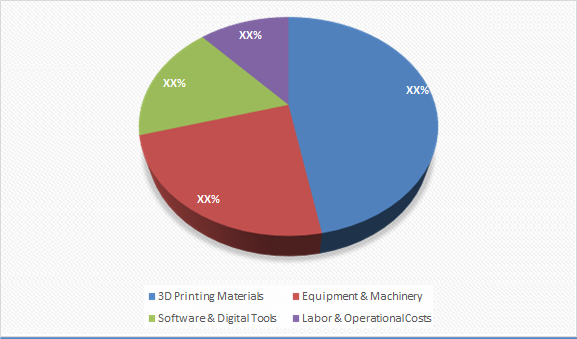
Cost-Saving Opportunity in the 3D Printing Market: Negotiation Lever and Purchasing Negotiation Strategies

Supply Factors:
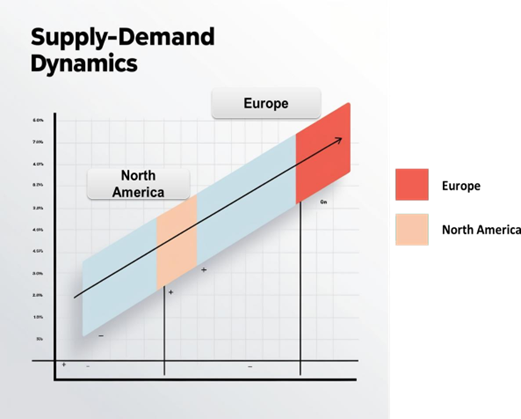
North America: Leading Hub in the 3D Printing Market
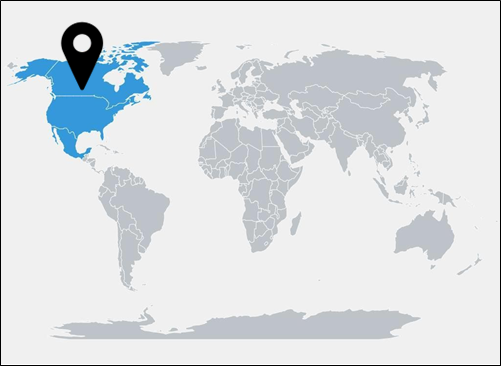
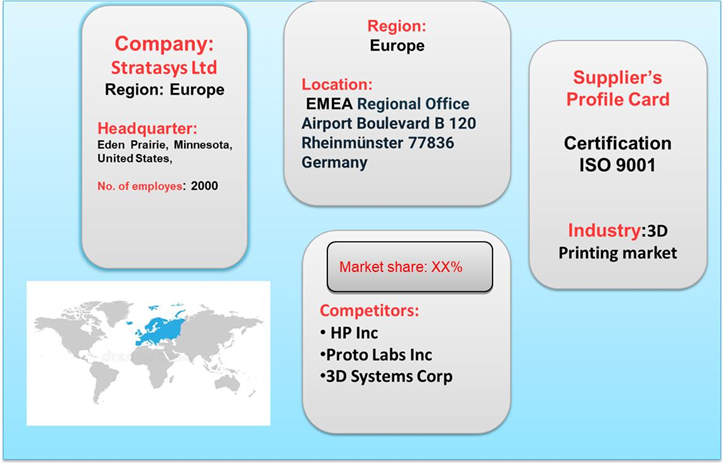
Key development: Procurement Category Significant Developments
Frequently Asked Questions (FAQ):
Our procurement intelligence services offer a comprehensive analysis of the 3D printing market, identifying
key suppliers and manufacturers globally. We provide spend analysis, supplier performance evaluations, and market intelligence to help you source 3D printing technologies efficiently and cost-effectively.
We evaluate the Total Cost of Ownership (TCO) by analyzing procurement costs, maintenance, material expenses, and lifecycle management. Our cost analysis services ensure you understand the long-term financial implications of adopting 3D printing solutions.
Our risk management framework addresses potential challenges such as supply chain disruptions, intellectual property concerns, and regulatory compliance. We offer solutions to mitigate risks and ensure reliable sourcing of 3D printing technologies.
Our Supplier Relationship Management (SRM) services help establish strong partnerships with key suppliers. We focus on improving collaboration, negotiating favorable terms, and ensuring consistent quality in 3D printing materials and hardware.
We provide insights into procurement best practices, including supplier categorization, pricing strategies, and contract management. This ensures strategic and informed decision-making when sourcing 3D printing solutions. Q6: How can digital transformation improve procurement in the 3D printing market?
Digital transformation enables streamlined procurement through automation and advanced data analytics. Our solutions include tools for tracking supplier performance, monitoring market trends, and optimizing procurement strategies in real-time.
: Supplier performance management is critical for ensuring compliance with quality and delivery standards. Our solutions provide tools to monitor and evaluate supplier performance, enabling better decision-making and reducing procurement risks.
We offer negotiation strategies supported by market intelligence, helping you secure favorable pricing, discounts, and flexible terms. Our data-driven approach ensures you get the best value from suppliers.
Our advanced market analysis tools provide insights into global trends, supplier market share, and pricing forecasts. These tools help you make informed purchasing decisions by understanding market conditions and identifying opportunities.
We guide you through regulatory compliance in the 3D printing market. Our solutions ensure suppliers meet safety, quality, and industry standards for technology and materials
Our strategies include identifying alternative suppliers, creating contingency plans, and monitoring the supply market outlook. These approaches help ensure a stable and continuous supply of 3D printing technologies and materials.
Our supplier performance tracking tools monitor metrics such as quality, delivery times, and compliance. Regular evaluations and performance reports provide insights for optimizing procurement decisions.
We assist in selecting suppliers that implement sustainable practices, such as using recyclable materials and reducing waste. Our sustainability assessments help align procurement with environmental and ethical standards
Our pricing analysis services compare costs across suppliers, analyze market dynamics, and identify negotiation opportunities. This ensures competitive pricing and cost efficiency in procurement.
We provide a detailed analysis of market opportunities and risks, including emerging technologies, supplier innovations, and potential challenges. Our insights help you stay ahead of competition and make strategic procurement decisions.
1. Executive Summary: Market Overview, Procurement Insights, and Negotiation Leverage
3D Printing Market Overview
Key Highlights
Supply Market Outlook
Demand Market Outlook
Category Strategy Recommendations
Category Opportunities and Risks
Negotiation Leverage and Key Talking Points
Impact of Macroeconomic Factors (e.g., COVID-19, Inflation)
2. Research Methodology: Procurement Intelligence, Market Analysis, and Spend Analysis Tools
Definition and Scope
Objectives for the 3D Printing Market
Data Sources and Approach
Assumptions and Limitations
Market Size Estimation and Forecast Methodology
3. Market Analysis and Category Intelligence
Market Maturity and Trends
Industry Outlook and Key Developments
Drivers, Constraints, and Opportunities
Regional Market Outlook within the 3D Printing Market
Procurement-Centric Five Forces Analysis
Mergers and Acquisitions (M&As)
Market Events and Innovations
4. Cost Aalysis, Spend Analysis, and Pricing Insights
Cost Structure Analysis
Cost Drivers and Savings Opportunities
Total Cost of Ownership (TCO) Analysis
Pricing Analysis and Expected Savings
Billing Rate Benchmarking
Factors Influencing Pricing Dynamics
Contract Pointers and SLAs
Market Cost Performance Indicators
Risk Assessment and Mitigation Strategies
Spend Analytics and Cost Optimization
5. Supplier Analysis and Benchmarking
3D Printing Supply Market Outlook
Supply Categorization and Market Share
3D Printing Material Supplier Profiles and SWOT Analysis
Supplier Performance Benchmarking
Supplier Performance Evaluation Metrics
Disruptions in the Supply Market
6. Technology Trends and Innovations within 3D printing market
Current Industry Technology Trends
Technological Requirements and Standards
Impact of Digital Transformation
Emerging Tools and Solutions
Adoption of Standardized Industry Practices
7. Procurement Best Practices
Sourcing Models and Strategies
Pricing Models and Contracting Best Practices
SLAs and Key Performance Indicators (KPIs)
Strategic Sourcing and Supplier Negotiation Tactics
Industry Sourcing Adoption and Benchmarks
8. Sustainability and Risk Management: Best Sustainability Practices
Supply Chain Sustainability Assessments
Corporate Social Responsibility (CSR) Alignment
Risk Identification and Assessment
Contingency Planning and Supplier Diversification
Holistic Risk Mitigation Strategies
9. Category Strategy and Strategic Recommendations
Market Entry Strategies
Growth Strategies for Market Expansion
Optimal Sourcing Strategy
Investment Opportunities and Risk Analysis
Supplier Innovation Scouting and Trends
Cross-Functional Collaboration Frameworks
10. Future 3D printing Market Outlook
Emerging Market Opportunities
Predictions for the Next Decade
Expert Opinions and Industry Insights
11. Appendices: Procurement Glossary, Abbreviations, and Data Sources
Glossary of Terms
Abbreviations
List of Figures and Tables
References and Data Sources








